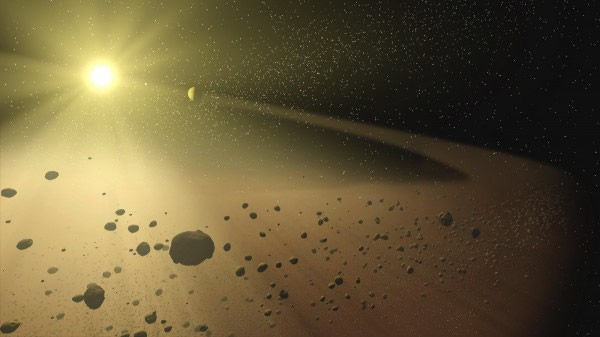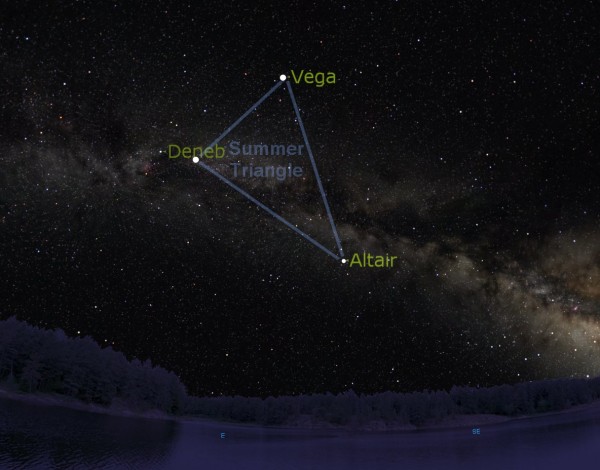5 Sky Events This Week: Row of Planets, Summer Triangle
An artist’s concept of the asteroid belt filled with rocks and dusty debris orbiting between the orbits of Mars and Jupiter. Image credit: NASA/JPL-Caltech
Evening planets continue to dazzle all week long, the largest asteroid in the solar system pays a brief visit, and an annual celestial landmark rises, signaling that summer is not too far off.
Mercury Meets Jupiter. Look towards the very low northwest horizon on Monday, May 27, about 30 minutes after sunset to catch a close encounter between the innermost and largest planets in our solar system. Mercury will pass only 2.4 degrees from Jupiter–little more than the width of a thumb at arm’s length. While both look like specks of light in our skies, it’s amazing to think of the enormous size difference between these two worlds: Mercury is 4,880 kilometers wide while Jupiter has a diameter of 142,740 kilometers.
Venus Joins Jupiter. The goddess of love gets her chance to dance with the king of all planets on Tuesday, May 28. The planets will be only one degree apart–so close that you can cover both worlds with just your pinky or little finger at arm’s length.
Ceres Asteroid. Got binoculars or a backyard telescope? Then starting Thursday, May 30 into the first week of June, try hunting down Ceres, the largest rock in the asteroid belt. This faint 7th magnitude star-like object is sailing through Gemini constellation and passing near Pollux, one of the twin’s super-bright stars. The best way to know for sure you’ve snagged this Texas-sized space rock is by checking your views from night to night to see its movement in front of the static star field.
Planetary Lineup. A great way to finish the month, on Friday, May 31, three planets form a near-perfect diagonal line after sunset. The faintest but highest in the sunset sky is Mercury, to its lower right is a bright Venus, followed by fading Jupiter. The cosmic trio will fit nicely into a a single field of view in binoculars, spanning about seven degrees, slightly more than the width of 4 fingers at arm’s length. The following days will see the planets continue to move apart, with Jupiter disappearing in the twilight glare.
Three bright stars form a giant triangular formation known as the Summer Triangle rising in the east near local midnight. Credit: Starry Night Software/A.Fazekas
Summer Triangle Rising. Next Saturday, June 1, look toward the low eastern sky around midnight local time for the brilliant Summer Triangle. This famous giant triangular formation of three bright stars begins to rise earlier and higher the closer summer approaches. The highest, top corner star is Vega, the brightest star in this part of the sky. To its lower left is Deneb, while to its far lower right is Altair.
Tell us—what amazing sky phenomena have you seen lately?(Posted by Andrew Fazekas in StarStruck on May 27, 2013)













